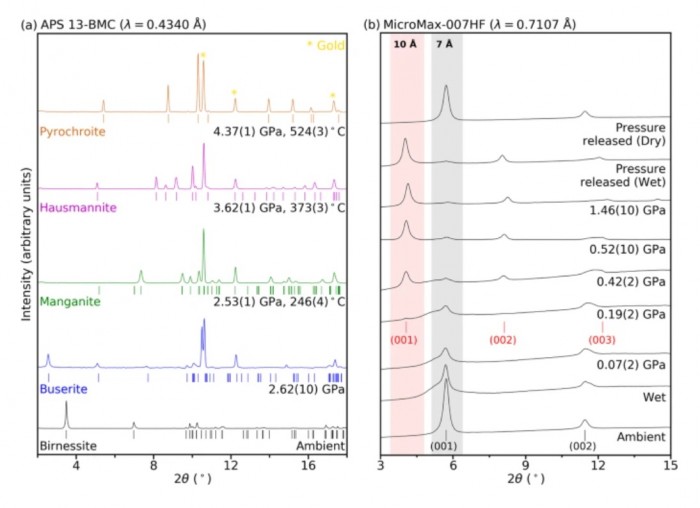“Super-hydration and reduction of manganese oxide minerals at shallow terrestrial depths”
- Authors
S. Yun, H. Hwang, G. Hwang, Y. Kim, D. Blom, T. Vogt, J.E. Post, T.-Y. Jeon, T.J. Shin, D.-Z. Zhang, H. Kagi, Y Lee*
- Journal
Nature Communications
Vol.13.1942, 2022.04 - DOI
Abstract
Manganese oxides are ubiquitous marine minerals which are redox sensitive. As major components of manganese nodules found on the ocean floor, birnessite and buserite have been known to be two distinct water-containing minerals with manganese octahedral interlayer separations of ~7 Å and ~10 Å, respectively. We show here that buserite is a super-hydrated birnessite formed near 5 km depth conditions. As one of the most hydrous minerals containing ca. 34.5 wt. % water, super-hydrated birnessite, i.e., buserite, remains stable up to ca. 70 km depth conditions, where it transforms into manganite by releasing ca. 24.3 wt. % water. Subsequent transformations to hausmannite and pyrochroite occur near 100 km and 120 km depths, respectively, concomitant with a progressive reduction of Mn4+ to Mn2+. Our work forwards an abiotic geochemical cycle of manganese minerals in subduction and/or other aqueous terrestrial environments, with implications for water storage and cycling, and the redox capacity of the region.












